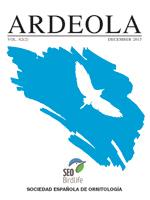The red-legged partridge Alectoris rufa is not only the most important bird game species but also an important prey species for many predators in Iberia. However, its populations have significantly declined in recent decades, principally as the result of agricultural intensification on arable land. Its abundance has also undergone a significant decline in forested areas over the last few decades, where wild ungulate management and abundance have increased. In this scenario, we aimed to test the factors that affect red-legged partridge abundance in relation to high wild ungulate (wild boar and red deer) abundance in south-central Spain. The factors included as predictors were carnivore, wild boar and red deer abundances, vegetation features, nest predation rate and invertebrate availability. Red deer abundance showed a negative relationship with partridge abundance in spring (non-significant negative trends were also evident for carnivore and wild boar), whereas variables related to food availability (grass biomass, Hemipteran abundance and total invertebrate mass) had a positive effect in the same season. Moreover, deer and carnivore abundances and spring nest predation rate were negatively associated with partridge abundance in autumn. Plant biomass and Hemipteran abundance were negatively correlated with wild boar abundance, whereas maximum pasture height was negatively related to red deer and wild boar abundance. Overall, our results show that high ungulate densities may negatively affect partridge abundance, which may be mediated by (i) a reduction in food availability (invertebrate and herbaceous plant biomass) and (ii) nest predation by wild boar. This research has shown that current intensive big-game hunting management schemes in south-central Spain are often incompatible with red-legged partridge conservation, and that these effects should be taken into account when defining big-game management and conservation policies.
How to translate text using browser tools
1 December 2015
Factors Affecting Red-Legged Partridge Alectoris rufa Abundance on Big-Game Hunting Estates: Implications for Management and Conservation
A. J. Carpio,
J. Oteros,
J. Vicente,
F. S. Tortosa,
J. Guerrero-Casado

Ardeola
Vol. 62 • No. 2
December 2015
Vol. 62 • No. 2
December 2015
Alectoris rufa
ciervo
competencia interespecífica
disponiblidad de alimento
food availability
game management
gestión cinegética




